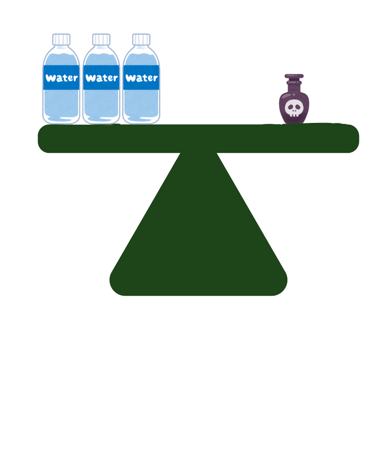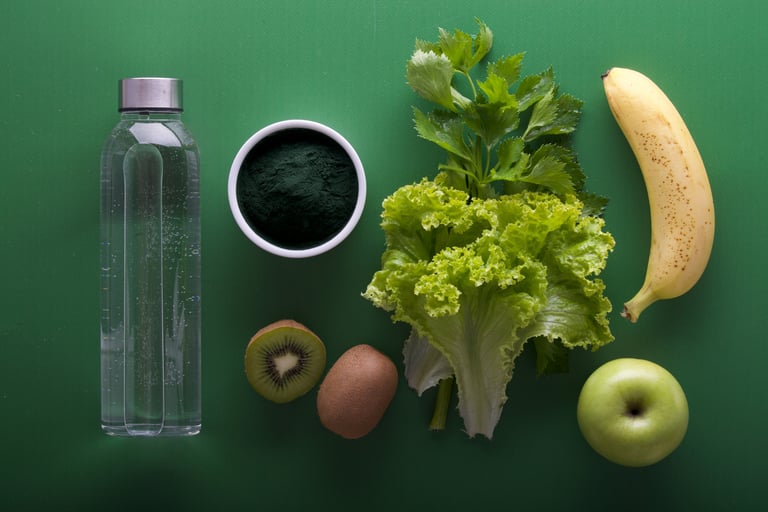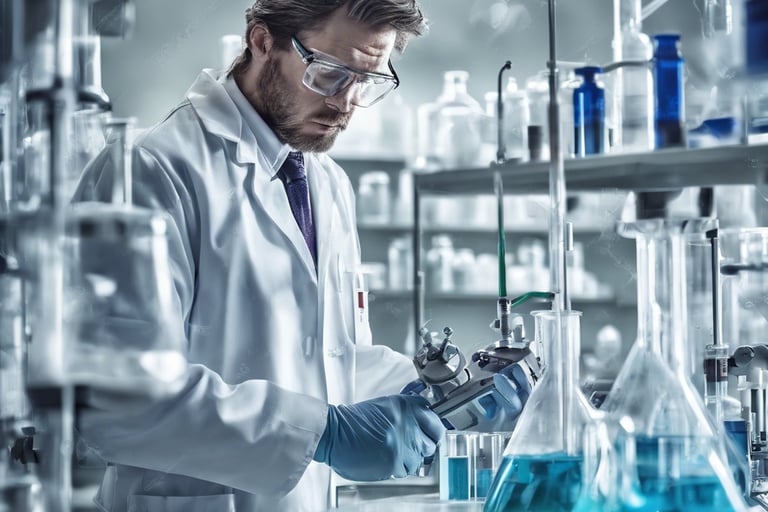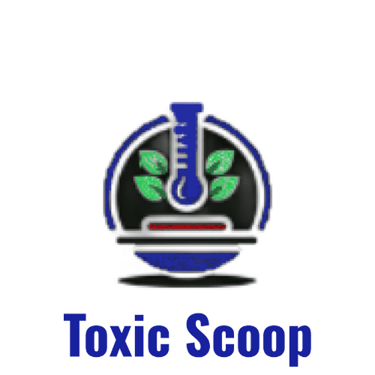
Intro to Toxics - the basics
This post provides general background information on chemical toxins and how you may be exposed to them in your daily life.
Toxic Scoop
11/19/20248 min read
Intro:
We started Toxic Scoop to provide a digital information hub where concerned individuals can get straight-forward, well researched information on toxins that they may be exposed to at home or in the environment. In a world of verifying opinions, confusing terminology, and tricky labeling, we aim to be a source of useful and actionable information. Our team, with decades of professional experience in the field of environmental science, health and safety, identifies important issues, performs thorough research, develops a concise summary relevant information, and presents realistic action items to keep you informed, minimize exposure and maximize your health. Most people want to reduce their contact with toxins, but how do you know what’s toxic? Don’t all chemicals eventually cause cancer? If I just buy organic or all natural products, I don’t have to worry about this, right? It can be a confusing mess of information, let’s try to get the scoop.
This blog includes the following information:
What makes a chemical toxic?
To understand why certain chemicals are dangerous, it’s necessary to define what toxicity means. There’s an old adage in toxicology that the dose makes the poison, which is attributed to Swiss physician and chemist Paracelsus who said: “All things are poison and nothing is without poison; only the dose makes a thing not a poison.” Generally, toxicity is the degree to which a chemical substance can cause damage to a living organism. The magnitude of toxicity is determined by the nature of the chemical, the dose, and the duration of exposure. Nearly all chemicals can cause adverse effects if the dose is high enough; however, thanks to the science of toxicology we can narrow down the list of chemicals that concern us. If taken into our bodies too quickly, at too high a dose, even water can cause significant harm, but we’re not going to worry about being over exposed to water in our normal lives (as long as it’s clean water 😊).
Toxicity is a complex concept because not all chemicals are equally dangerous. A chemical is considered toxic if it can cause adverse health effects under certain generally common conditions of exposure. Toxic effects range widely, from mild symptoms like headaches or skin irritation to severe conditions like physical injury, organ damage, reproductive issues, cognitive impairment, and cancer. In some cases, toxic chemicals disrupt the endocrine system, impacting hormone regulation and overall health. However, it’s important to also understand that certain chemicals at generally low doses have demonstrated no effect, and for some have even been shown to be beneficial to human health (this is called the hormetic effect). It’s also critical to understand that toxic chemicals are not only synthetic in nature, even certain naturally occurring compounds and elements can be extremely toxic.
Toxicity levels vary from one chemical to another, depending on properties like molecular structure, solubility, reactivity, volatility, metabolic processes, and other factors. For instance, chemicals that are highly soluble in fat (lipophilic) tend to accumulate in body fat, potential leading to chronic exposure and health issues. Understanding the factors that contribute to toxicity can help homeowners identify measures to avoid exposure to potentially harmful chemicals in everyday environments.




How am I exposed to toxins in my home and local environment?
Exposure to toxic chemicals can happen via any of three basic pathways: inhalation, ingestion, and dermal absorption. This means the air you breathe, the water and food you ingest, and the items you come into contact with could be sources of exposure to toxins. Since many toxic chemicals are widely available and often poorly labeled, it can be difficult to assess the potential risk for items found in the home. This is what we want to help you with (link coming soon with top items to reduce toxic exposure in your life).
The presence of toxic chemicals in your daily life is more common than many people realize. Potentially dangerous toxins can be found in a range of sources and products that include:
Ambient Air: People spend about 90% of their time indoors and 100% of their time breathing air, the quality of the air you breathe is a significant factor in overall health and well-being. Having safe air to breathe is a basic right for everyone. Indoor air quality starts with the quality of outdoor air. Toxins in indoor air can include biologics (mold, mildew, etc.), particulate, volatile organics (paints, cleaners, etc.), combustion products (carbon monoxide, nitrogen dioxide, particulates, etc.), and radon to name a few.
Drinking Water: Humans consume about 3 to 4 liters of water each day. Public water systems serve about 95% of the population of the USA and the remainder of the population is served by private water supply. These drinking water supplies can include surface waters (lakes and rivers) or water found below the surface of the ground (groundwater) and both sources can be exposed to toxins. The EPA has established standards for about 100 contaminants out of thousands of potentially toxic chemicals. Typically, about one-quarter of the public water systems in the USA have exceeded EPA drinking water standards. Therefore, it’s not hard to conclude that drinking water is a potentially significant source of toxic exposures.
Household Dust: Toxins can affect household dust due to migration from building materials and household products. In particular, phthalates and flame-retardant chemicals have been found to be relatively common in household dust. Also, certain heavy metals can be found in household dust. You could be exposed to dust when it is mobilized into the indoor air, via dermal contact (touching) or via incidental ingestion (hand-to-mouth) when you come into contact with dust.
Household cleaning agents: Bleach, ammonia, and other cleaning chemicals can release fumes that are harmful to inhale, particularly in poorly ventilated spaces.
Personal care products: Many shampoos, lotions, and cosmetics contain potential toxins such as phthalates, parabens, and synthetic fragrances.
Building Materials and Furnishings: Flame retardants, formaldehyde, and other chemicals are commonly added to furniture, flooring, and textiles, and these materials can release these chemicals over time.
Pesticides: Homeowners may use herbicides, insecticides, and rodenticides that contain chemicals known to be toxic to human health.
Plastic products: Plastic containers, toys, and packaging can generate microplastics and can often contain potential toxins like bisphenol A (BPA), phthalates, and metals (from paint), which are potentially harmful upon exposure.
Why is it hard to get a straight answer on toxics?
Despite the significant impact toxins can have on health, people often find it challenging to determine the safety of specific products. This uncertainty results from several key issues:
Industry influence: Certain industries have historically opposed the regulation of their products, creating additional confusion. For example, the tobacco and plastic industries have conducted their own studies and lobbying efforts to cast doubt on independent findings, sometimes downplaying risks associated with their products.
Social media influence: Social media can amplify awareness of chemical toxicity in consumer products but often oversimplifies the science, spreading fear over facts. Misinformation can lead to unwarranted panic, regulatory pressures, or the rejection of safe, beneficial substances. Striking a balance between informed public discourse and accurate scientific communication is crucial to avoid misguiding popular opinion.
Regulatory confusion: In many cases, regulatory bodies like the Environmental Protection Agency (EPA) or the Food and Drug Administration (FDA) have been slow to regulate certain chemicals, due to both the economic impact and lack of definitive studies. Then there are states like California and other countries who enacted their own chemical enforcement standards which inform consumers of potentially toxic substances in various products. The varying array of regulations and regulators can create confusion on who to trust and where to look for safe products.
Scientific uncertainty: Toxicology is an evolving field, and the effects of low-level exposure over a lifetime can be difficult to study. Many health issues associated with toxic chemicals only become apparent after years of exposure, and isolating a single chemical as the cause is often challenging. Additionally, health effects can differ among individuals, creating complex results that are difficult to interpret. Also, the exposure to mixtures of substances can add significant complexity to making definitive scientific conclusions.
Lack of useful studies: Toxicology research is costly and time-consuming, and some chemicals are understudied because of financial and logistical challenges. Even when studies are available, they may be based on animal studies or other indirect methods rather than on long-term studies with human participants, potentially leading to inconclusive results.
These factors contribute to a state of confusion where homeowners may not have reliable information on which to base their choices. Consequently, understanding basic pathways of exposure and protective measures becomes essential for homeowners who wish to limit their exposure to harmful chemicals..


What can I do to reduce exposure to toxins?
Fortunately, you can take proactive steps to reduce exposure to toxic chemicals and create a healthier living environment. Here are some effective strategies:
Use bottled or filtered water to reduce exposures: Using high-quality bottled water can be an effective and quick way to address concerns about your drinking water. Using a water filter is a great option and can have the added convenience of addressing concerns from exposures to water during cooking, bathing, or other activities. However, different filters target different contaminants and there are additional considerations when selecting an appropriate water filter for your situation.
Improve ventilation: Proper ventilation can reduce indoor pollution and minimize exposure to harmful fumes. Opening windows, using exhaust fans, and ensuring good airflow can help disperse volatile chemicals and other harmful gases that source from indoor air. However, in some situations, toxins in the outdoor air may also be a concern. Investing in high-quality air filters, or indoor air purifiers can help remove toxins from the air, reducing inhalation risks.
Regularly clean and reduce dust accumulation: Frequent cleaning helps minimize the buildup of dust that can harbor toxic chemicals. Vacuuming with a HEPA filter and wet-mopping can effectively remove dust and prevent these materials from being inhaled or ingested. Washing hands regularly can further reduce the risk of ingestion, especially for families with young children.
Select safer products: One of the most effective ways to reduce chemical exposure is by choosing less toxic alternatives. For example, replacing conventional cleaning products with those made from vinegar, baking soda, or citric acid can significantly reduce harmful fumes and skin irritants in the home. Many companies now produce non-toxic products that are free from common toxins. Also, selecting less toxic building materials such as low-VOC paints can reduce exposure to these materials in the home.
Limit plastic use and choose safer containers: Avoid storing and/or heating food and beverages in plastic containers, as this can increase the release of certain potentially harmful chemicals. Instead, choose glass, stainless steel, or silicone containers for food storage and reheating. Minimizing plastic use, in general, can help reduce the risk of exposure to toxins commonly found in plastic products and will reduce the release of these materials into the environment.
Be cautious with pesticides and opt for natural pest control where feasible: Pesticides can contain toxic chemicals harmful to both humans and the environment. The use of natural pest control options, such as traps and less toxic alternatives can reduce your risk of being exposed to toxins and leaving potentially toxic residues in and around your home. If pesticide use is necessary, follow application instructions carefully and avoid high-risk areas like kitchens and play areas.
Be aware of greenwashing: With increasing awareness of toxic chemicals, many companies now market their products as “green” or “natural.” However, these labels can be misleading and are not always backed by regulatory standards. Homeowners should understand labeling and look for products with labels by a known certifying entity like EPA’s Safer Choice or USDA Organic rather than relying solely on marketing terms.
Wrap up...
Awareness of toxins that you may encounter at home or in your local environment and their effects is crucial for people who want to maintain a safe, healthy living environment. While social media hype, regulatory gaps and scientific uncertainties can make it challenging to identify which products are truly safe, homeowners can take practical steps to minimize exposure. By choosing non-toxic products, improving ventilation, providing for clean water, reducing dust, and being cautious about chemical use, homeowners can effectively reduce their risk of chemical exposure.
Avoiding toxic chemicals may seem like an overwhelming task, but even small changes can have a meaningful impact on health and well-being. A proactive approach to reducing toxic exposure not only protects immediate health but also contributes to healthier, safer lives for our and future generations.
Awareness
Empowering you with knowledge on environmental toxins.
Resources
Support
toxicscoop1@gmail.com
© 2024 Toxicscoop.com. All rights reserved. Disclaimer - Terms and Conditions - Privacy Policy
